Realizing Children’s Rights in the Democratic Republic of the Congo
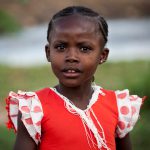
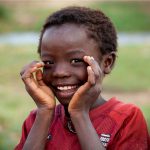
Children in the Democratic Republic of the Congo are living through one of the worst humanitarian crises in the world, where armed conflict is a daily reality and children are recruited and forced to train as child soldiers. The human rights situation is severe for children, and they experience a myriad of daily challenges: poverty, sexual violence, disease, and inability to access to food and clean water. Their human rights are routinely violated and they are frequently exposed to violence from armed groups, in some cases abducted and forced into military forces.

Children’s Rights Index: 4,83/10
Black level : Very serious situation
Population: 84.07 million
Pop. ages 0-14: 46 %
Life expectancy: 60 years
Under-5 mortality rate: 99.39 ‰
DRC at a Glance
The Democratic Republic of the Congo (“DRC”) forms the largest country in size in the Sub-Saharan African region, and is the second largest country in Africa, second to Algeria. As of 2016, the total population of the DRC was 78.7 million, and further grew to 84.07 million in 2018.
It has a 25-mile coastal line along the Atlantic Ocean, but remains primarily landlocked with the bordering countries of Angola, Zambia, Tanzania and Congo, among others. Historically speaking, the DRC was under Belgian colonization for an 80-year period, and although the country gained independence in 1960, acts of torture became widespread against political opponents due to patterns of political instability and a large absence of democratic process (OHRC, 2005). Simply put, since the DRC gained independence, the country has experienced severe war-related and civil conflict.
The socio-political context of the DRC is marred with conflicts that erupted in the 1990s following the overthrowing of Mobutu in 1997. After taking power in 1997, former President Laurent Kabila suspended democratic process in order to establish a new constitution that would allow for elected parliament (Kabemba, 2005). Yet, the newly created Parliament failed as power remained concentrated in Kabila’s authority until 2001 when Kabila was assassinated, and the trend continued under the rule of his son Joseph Kabila.
The DRC continues to experience brutal political repression and delays in democratic elections, where state security forces use violence to exercise power over Congolese civilians (HRW, 2018). Simply put, the DRC is in a constant state of war and political upheaval because the Congolese government is at war with its own people (HRW, 2018).
Status of Children’s Rights [1]
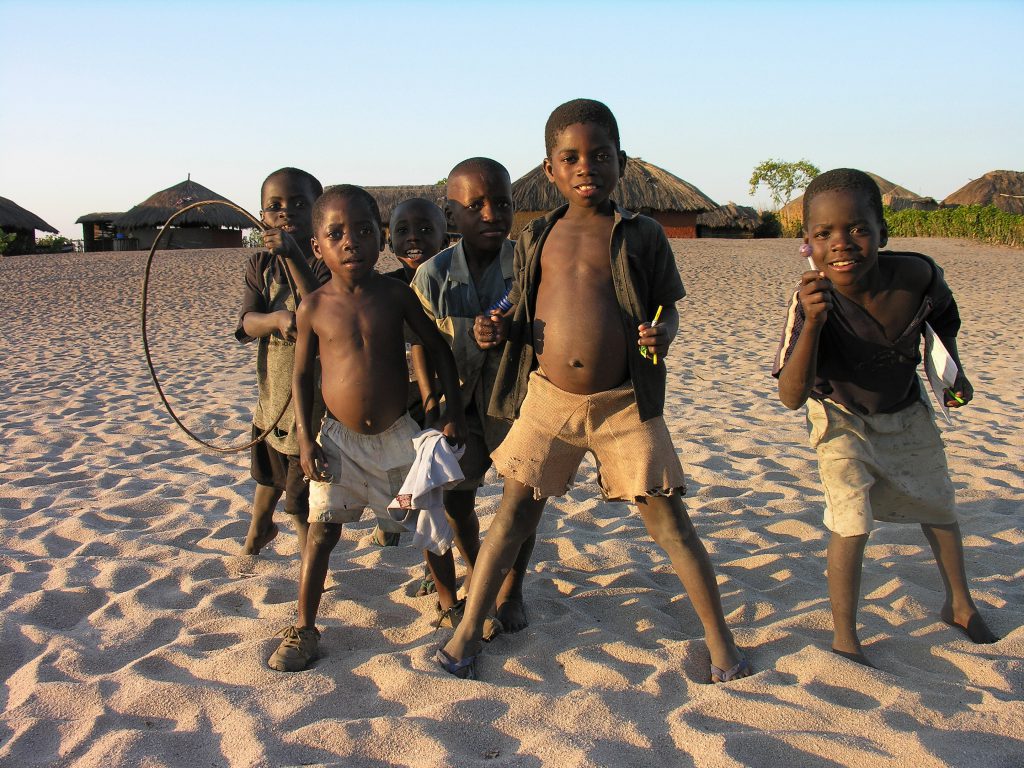
The DRC stands as one of the poorest countries in the world, with 77% of the population living in poverty and on less than $1.90 per day. It is more likely than not that the average household in the DRC is poor and has more dependent persons, especially children. Educational level is a key factor in determining socio-economic status in the DRC, whereby the higher the education level of the head of the household is, the less likely it is for the family to be poor. Higher education improves overall life outcome for children and families with results being improved diet, health and access to essential services.
Other socio-economic concerns include underemployment for young persons, with noticeable limited access to jobs and programs for career mobility.
Addressing the Needs of Children
Right to Education
For children in the DRC, education is a path to a hopeful future, yet education remains out of reach for almost 7 million children ages 5 to 17. Political instability and natural disasters have prevented the DRC from achieving universal primary education for children. Moreover, the main financial costs for direct and indirect expenses related to supporting a child’s education are the parent’s responsibility. There are serious economic disparities between families who can afford to support their child’s schooling costs, disparities that result in uneven distribution of school institutions and infrastructure in the country.
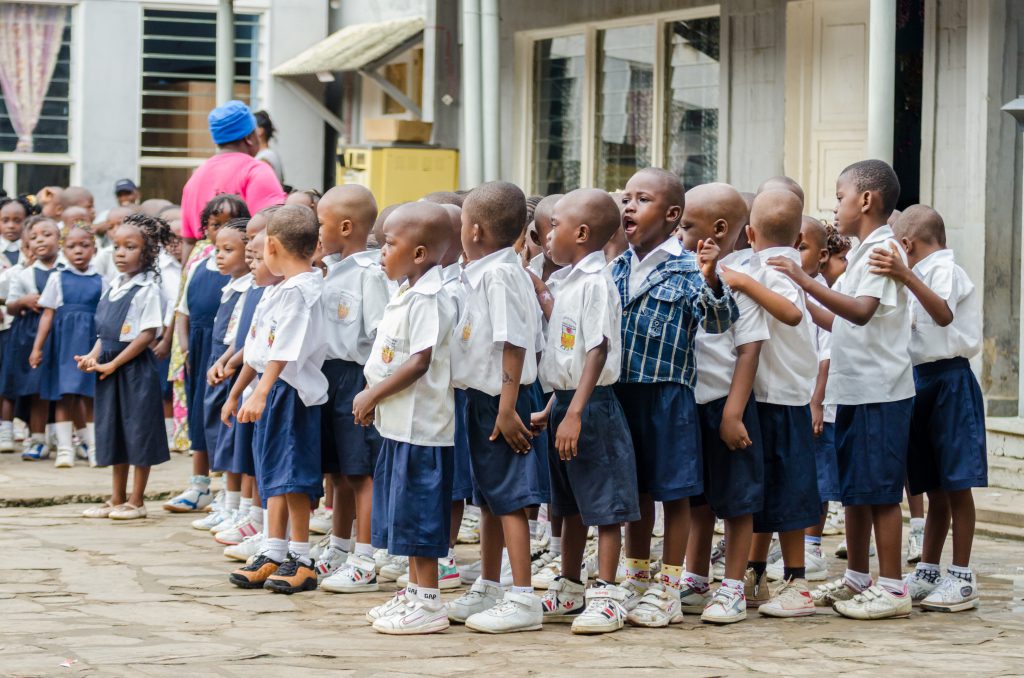
The quality of education is a further concern, as there is a significantly lower rate of qualified teachers, and there are high repetition and dropout rates for children who do attend school. Other socio-cultural barriers and vulnerabilities such as child labor, child marriage, health conditions and early pregnancy all impact the chances of attending school for children. The likelihood of girl children is most concerning, as UNICEF documents that 52.7% of girl children aged 5 to 17 do not attend school in the DRC.
Right to Health
In the DRC, a child’s right to health is seriously threatened from the moment they are born. On a larger scale, the health of Congolese people is in a vulnerable state because of a weak health care system coupled with extreme levels of poverty (European Commission, 2018).
There are also several ongoing epidemics that kill thousands of children in the DRC every year, and the healthcare system is in weak condition, unable to support deadly health crises (UNICEF, 2020). Measles, cholera, and malaria have ravaged the country and children are the primary victims of these diseases. Cholera, a result of poor sanitation systems and unclean drinking water has killed 540 people in 2019, half of that number are children. Measles, a more serious epidemic caused 6, 200 deaths in 2019-2020 and 85% of these deaths were children aged 5 and under (UNICEF, 2020). It is estimated that over 3.3 million children have gone without adequate healthcare (UNICEF, 2020).
Right to Food
It has been documented that 25% of Congolese children are underweight and there is a widespread issue of anemia for children who are between 6 months to 5 years of age. The rate of malnourished children is acute, where at least two million children who are malnourished are highly likely to experience death unless they are provided adequate food (Aljazeera, 2018). Children who live in remote conflict zones and displaced children are also likely to go without food since it is difficult for humanitarian workers to reach them (Aljazeera, 2018).
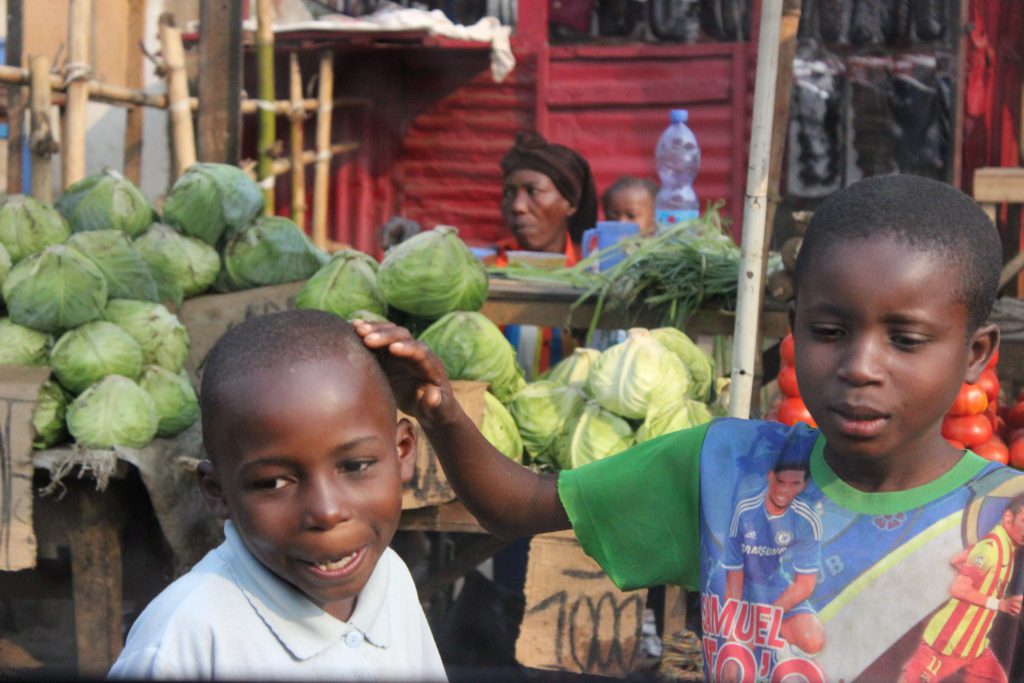
Malnutrition is a persisting issue for Congolese children, where 46% of children are stunted, impacting their growth and development (Centers for Disease Control and Prevention, 2015). Malnutrition can be attributed to poor nutrition, patterns of infection and insufficient psychosocial interaction (i.e. lack of access to education). The DRC suffers greatly from acute malnutrition in alarming numbers, what has been defined as a ‘silent crisis,’ (European Commission, 2018).
Risk factors → Country-specific challenges
Poverty and Street Children
There are several key contributing factors to homelessness: war-conflict, internal displacement, illness and unemployment, all of which drive the rate of children who become homeless. Political instability and armed conflict are the driving primary causes of poverty in the DRC beginning in the 1990s.
Poverty and homelessness can also be attributed to families unwilling to adopt orphans and unwanted children, where children are left with no other choice but to live on the street. In conflict where rape is used as a war tactic, women become pregnant with children and abandon them due to humiliation and embarrassment from society, as well as feelings of shame.
Children who were born as a result of rape are thus rejected and abandoned by their mothers and because there are no existing child protection institutions in the country, the children suffer greatly. Children of rape are also excluded from their communities, which causes them severe trauma and distress. These circumstances forces children to live on the street, a phenomenon also known as ‘street children’, whereby children are exposed to daily violence and hardship. Poverty and the inability for families to provide for children also results in children being abandoned and ultimately homeless.
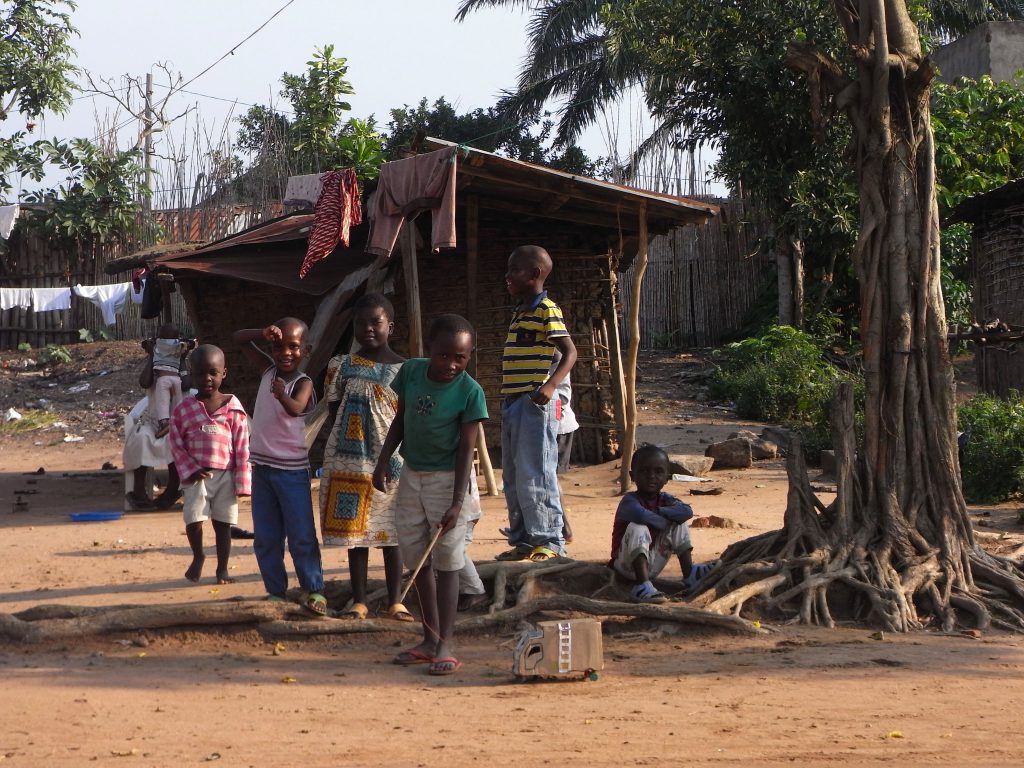
Street children go unsupervised with no access to food, education, or shelter and other basic necessities, circumstances which leave them vulnerable to abuse and exploitation by adults and law enforcement personnel who force them into illegal criminal activity. Law enforcement officials have used the vulnerability of street children to their advantage by deliberately recruiting street children to disrupt political protests and cause public disorder, where many children become injured and even killed.
Children are further exploited by civilians who use them as porters, cleaners or laborers in their homes and stores, paying them very little while making them work long hours and perform physically gruelling work. Adults have also forced street children into illegal activities such as prostitution and drug trafficking.
In 2011, it was documented that almost 30,000 children under the age of 18 were homeless in the country’s capital, Kinshasa. What is most concerning, is that girl children are increasingly homeless, with some girls as young as ten years of age. Both girls and boys who live in homelessness are survivors of rape and sexual assault committed by older street boys and men.
Violence and Sexual Exploitation of Children
Patterns of gender inequality against females and girl children that take place during peacetime increase during armed conflict. While all civilians are greatly impacted by armed conflict, studies have consistently shown that females and girl children are more likely to be victims of violence and are targeted based on their sex.
In 2018, it was documented by the Office of the Special Representative of the Secretary-General for Children of Armed Conflict that 277 girls were raped during intercommunal disputes. Unequal power relations in peacetime are violently carried out during war. Research on the DRC and war-related crimes of sexual violence shows routine state failure to prosecute sexual assault and a refusal to criminalize forced marriage. Despite domestic laws in place to protect children from sexual violence and the presence of the issue on the UN Security Council’s agenda, no real protection is afforded to children in peacetime and in period of conflict.
Violent war-conflict in the DRC that has been ongoing since the 1990s is largely associated with widespread rape, a method of violence used by combatants and military forces. Conflict in the Eastern region is a critical issue for children as they experience high levels of sexual and gender-based violence, and researchers have found that survivors of sexual violence under the age of 18 in this region were more likely to experience gang rape and assault than adults were.
While the majority of sexual offenders of child abuse were identified as civilians, militarized rape among children is also prevalent (Kalisya et al., 2011). Children are used as part of military tactics by all combatant groups involved in conflict. Planned attacks are also carried out against children by armed groups and homes are also destroyed by armed groups who burn them down. There is also a severe lack of resources and supports for families and children who are victims of sexual violence, shelter, food and water is scarce, which forces many women and children into prostitution.
Forced Displacement of Children
Over the past two decades, over 6 million civilians have been killed by government armed forces, with approximately 5 million people forced into displacement, making the DRC conflict the largest internally displaced situation in Africa (HRW, 2018). Children are the first victims of conflict, uprooted from their homes, schools, families and communities in war-related conflict. Children willingly enter forced displacement in order to avoid being recruited by armed groups.
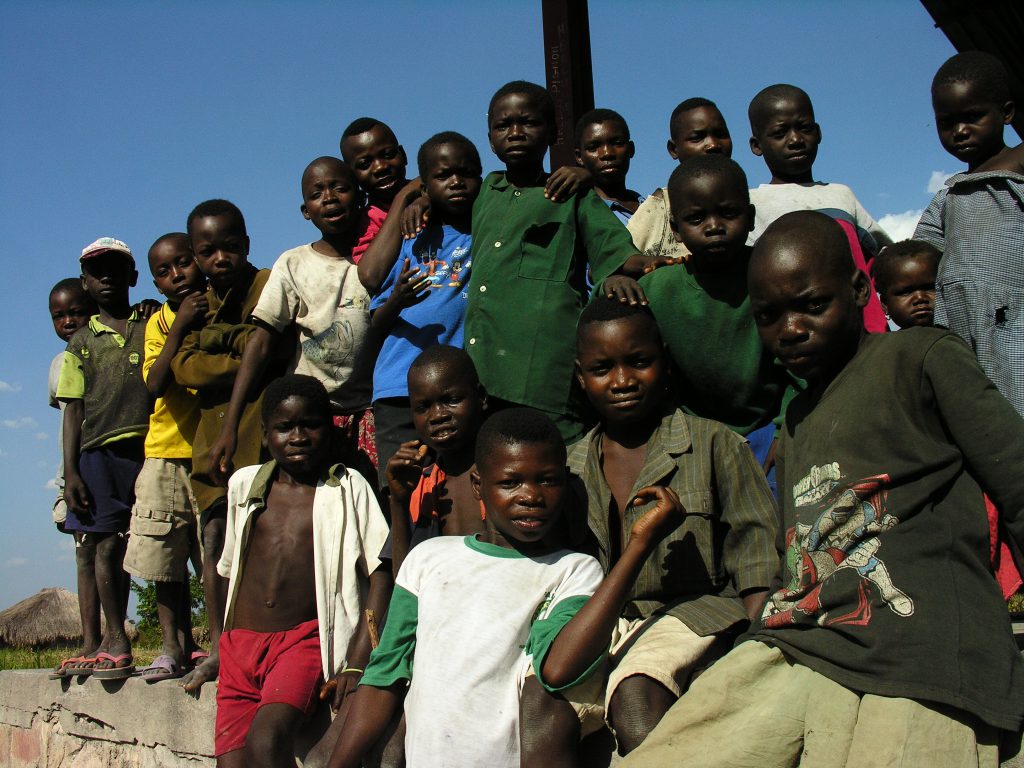
As of 2017, 850,000 Congolese children were forcibly displaced due to brutal conflict in the Greater Kasai region, and have had to survive in makeshift huts, suffering from basic necessities such as food, water, sanitation, shelter and healthcare (UNICEF, 2017). The eastern region of DRC recently experienced increased displacement in 2018, forcing families to flee their villages and homes to live in informal settlements made of branches, exposing them to harsh weather conditions and safety threats (UNHCR, 2020). Displaced children remain in dire need of urgent care, protection and basic necessities.
Child Soldiers and Armed Conflict
Congolese children are the primary victims of war because they are consistently recruited by armed groups and the Congolese army, in some cases by force, to participate as fighters, porters and escorts (Human Rights Watch, 2016). Child soldiers are also unlawfully detained for long periods of time, where conditions are severe: lack of food, clean water, and medical care. Armed conflict is a persistent issue in specific regions of the DRC, and children are highly vulnerable in these situations as they are powerless against the brutality of militant groups.
Since 2001, use and recruitment of child soldiers has been a tactic used by armed political groups, where up to 40% of their forces were made up of children (Child Soldiers International, 2004). Child soldiers that are recruited are often under the age of 15 (Rakisits, 2009). In 2018 alone, 631 cases of recruitment and use of children in armed conflict was recorded by the Office of the Special Representative of the Secretary-General for Children of Armed Conflict.
Given the increase in conflicts in various regions throughout the DRC, children are recruited by armed groups to serve as combatants, spies and transports. Children form part of the militia group where they witness murders and other crimes, are sent to camps to learn weapon training, and are then forced to commit serious human rights violations against civilians and even their own families. In these cases, a child is not able to experience childhood or attend school and obtain an education, they are forced into a life of violence and trauma.
Written by Jennifer Prashad
Last updated on 19 May 2020
References:
African Development Bank Group. (2020). Democratic Republic of Congo Economic Outlook.
Centers for Disease Control and Prevention. (2015). Democratic Republic of the Congo, Integrated infant and young child nutrition and lipid-based nutrient supplement program.
Henderson. Tanya E. (2011). “Protection Women in Peace and Conflict: International Humanitarian and Human Rights Law at Work” Peace & Freedom 71(2).
Gorman, Madeleine. (2010). “Sexual Violence In the Democratic Republic of Congo.” Undergraduate Transitional Justice Review, 1(2).
International Monetary Fund. Democratic Republic of the Congo: Poverty Reduction Strategy Paper. (2013 July). IMF Country Report No. 13/226.
Kalisya, L. M., et al. (2011). “Sexual Violence toward Children and Youth in War-Torn Eastern Democratic Republic of Congo.” PLOS ONE, 6(1).
Kabemba, Claude. (2005). “Democratic Republic of Congo” South African Journal of International Affairs, 12(1).
Kuwonu, Franck. (August 2016). DRC economy: The giant awakens. Africa Renewal.
Nelson, B.D., Collins, L., VanRooyen MJ, Joyce, N., Mukwege, D & Bartels, S. (2011). “Impact of sexual violence on children in the Eastern Democratic Republic of Congo. Medicine Conflict and Survival, 27(4), 11-25.
Rakistis, C. (2009). “Child Soldiers in the East of the Democratic Republic of the Congo” Refugee Survey Quarterly, 27(4), 108-122.
The World Bank. (2020). The World Bank in DRC.
The World Bank. (2019). Population ages 0-14.
UNICEF. (2020, March 31). Children in the Democratic Republic of the Congo at risk from killer measles, cholera epidemics.
UNICEF. (2018, February 12). Thousands of children continue to be used as child soldiers.
UNHCR. (2020, February 6). Democratic Republic of the Congo Refugee Crisis Explained.
World Health Organization. (n.d.). Democratic Republic of the Congo.
[1] This article by no means purports to give a full or representative account of children’s rights in the DRC indeed, one of the many challenges is the scant updated information on the children in the DRC, much of which is unreliable, not representative, outdated or simply non-existent.

